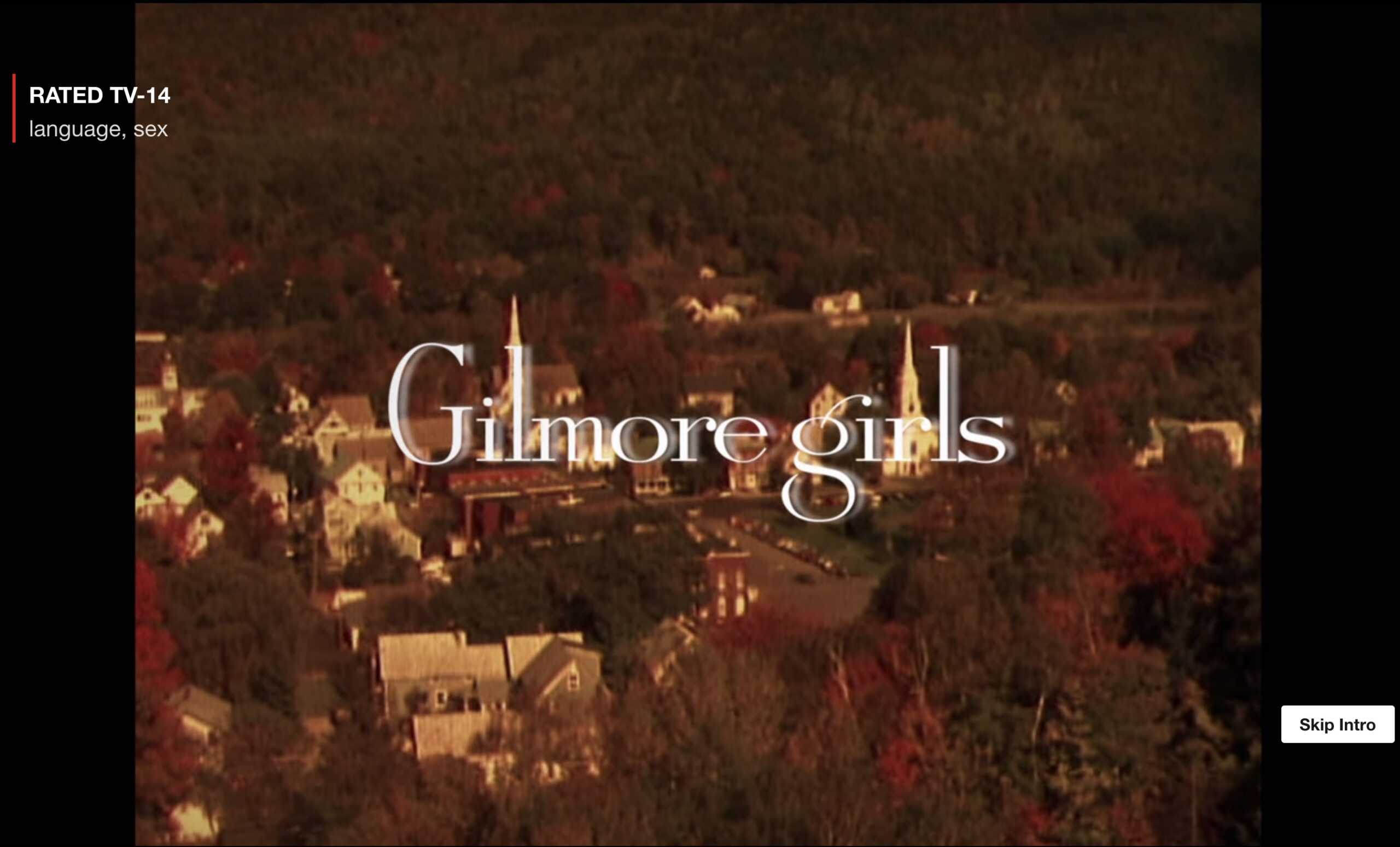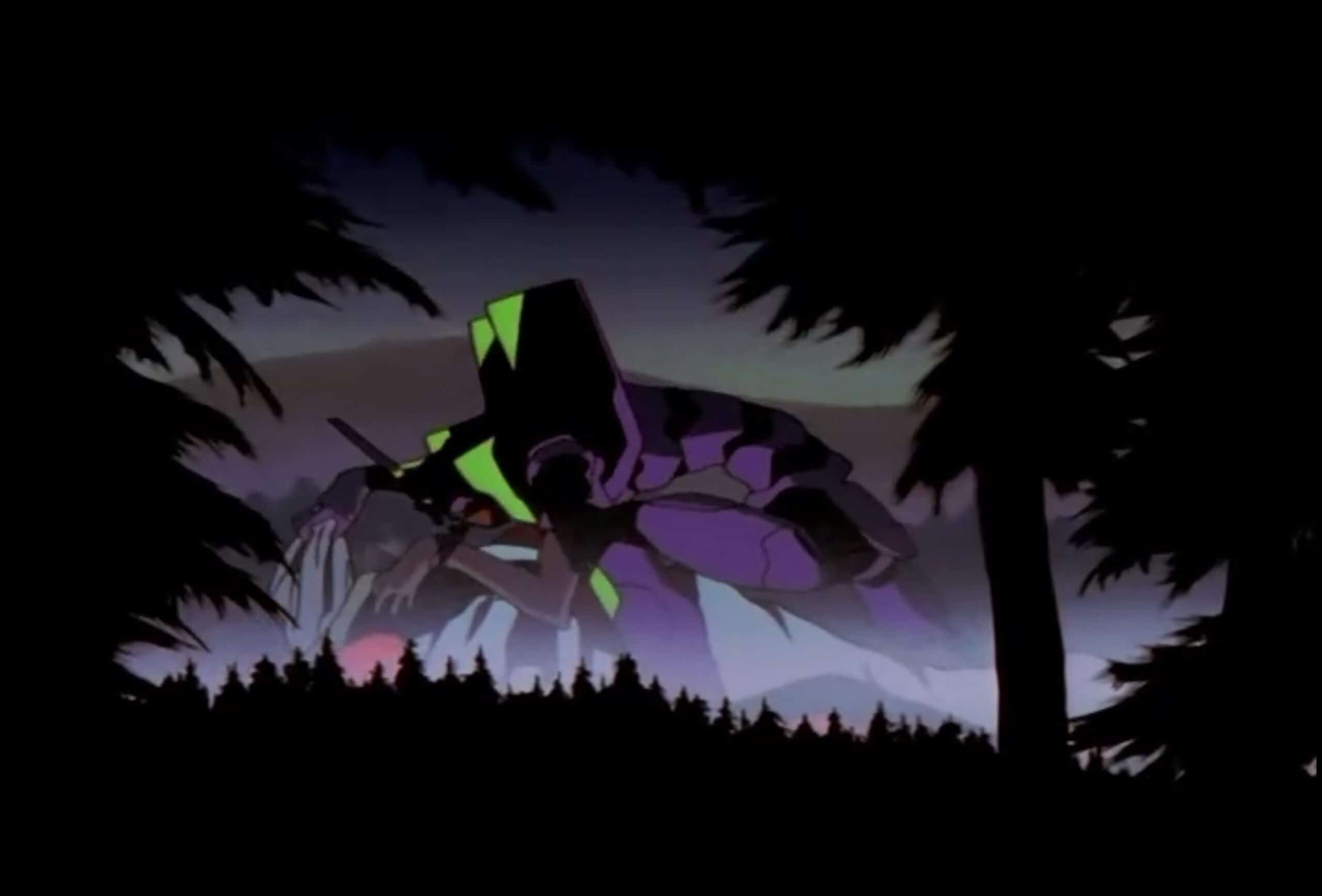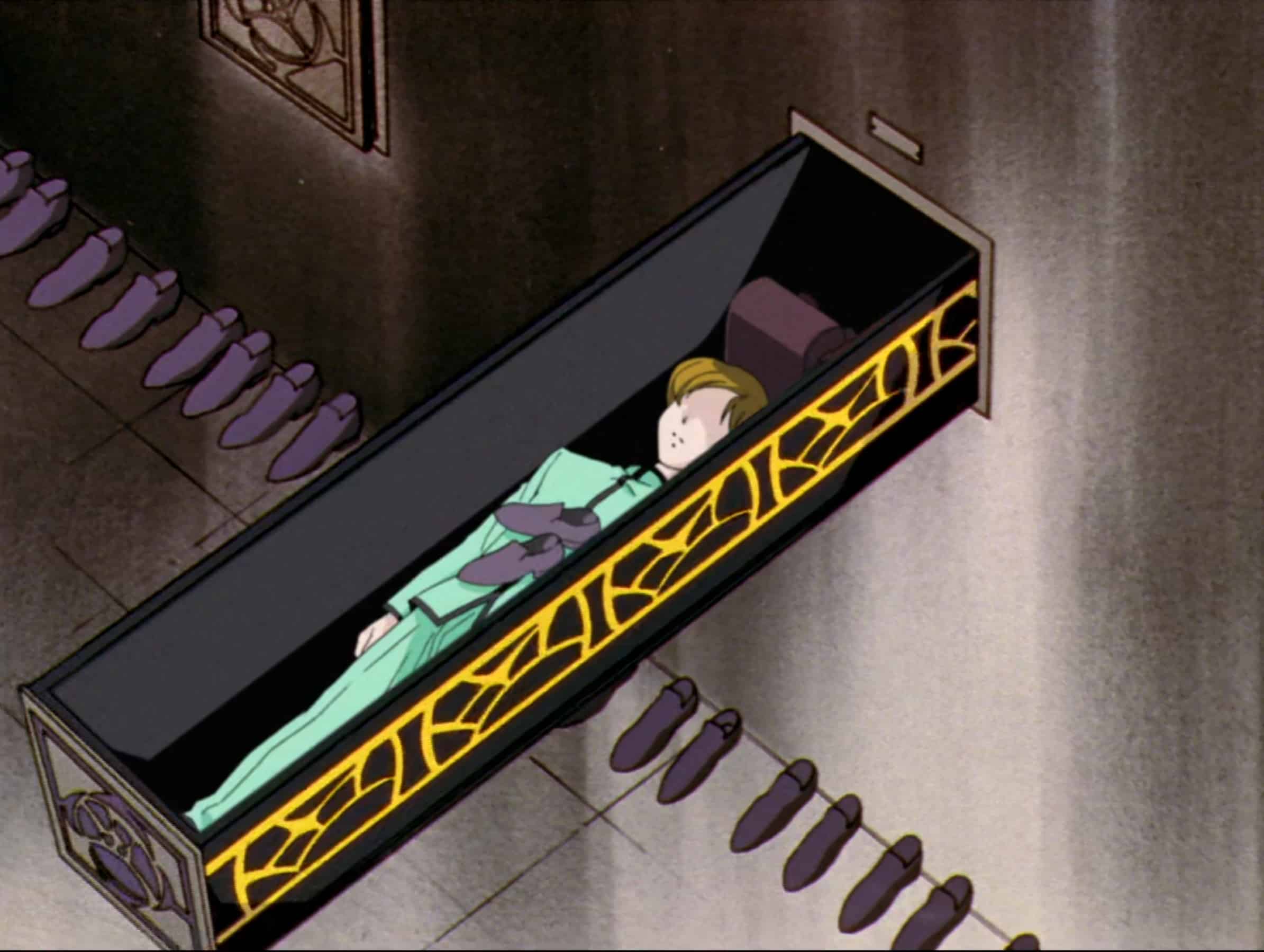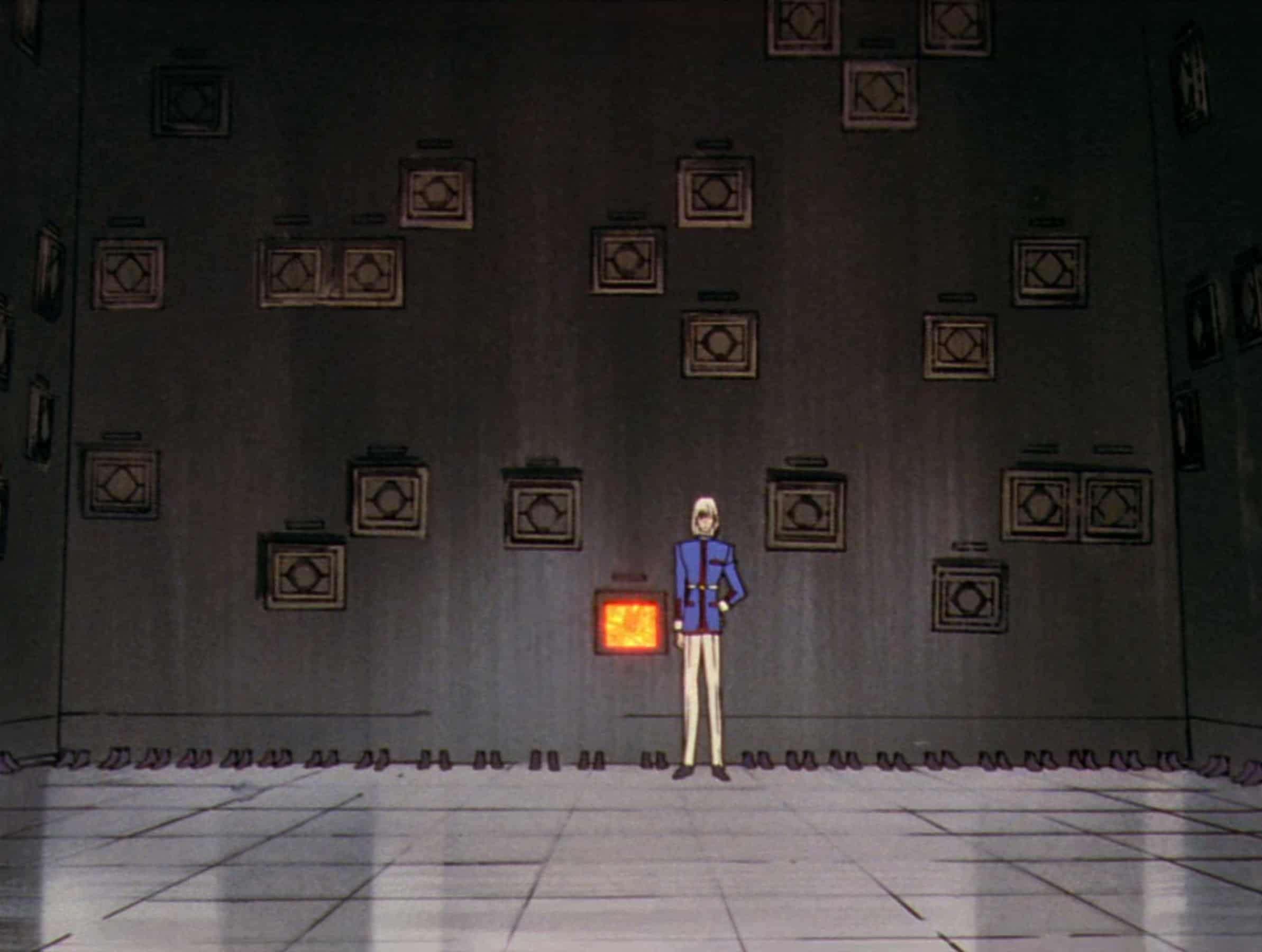Patricia Highsmash
Us Living in Fictional Cosmogonies
Part VIII: Shoujo Kakumei Utena: Ritual
by Travis Hedge Coke

We can’t skip intro. Time travel is extremely dangerous!
A question I see posed frequently in fan groups, from Star Trek to Gilmore Girls to Shoujo Kakumei Utena is, Do you skip the intro credits? With a show like Utena, which reuses particular sequences, like the climb up the stairs to the dueling grounds, a secondary form is, Do you skip the reused footage? Many do.
I cannot. It would be weird.
Now, I am, myself, weird about television. I have never really, truly minded turning off an episode of tv, a movie, a song, putting down a book or leaving a listicle unfinished. I can love a tv program, but if someone wants to watch something else, if something comes up, if the power goes out or I receive a call, regardless of how into the show I may be in the moment, I can turn it off, pick it up later or never.
Because of this, I sometimes worry I do not love programs or works enough. Maybe, I do not.
But, the opening credits of a program feel like part of the program to me. Reused footage, whether a brief insert or full scenes, feel an intentional part of the show. I love them, because I love reuse and repeat footage, on its own terms, but I also love it if there is a sense of ritual to the reuse.
The opening and closing credits, their music or narration, the visuals and visual style can feel religious. They should feel religious.
Who is ready to see Dorothy and Blanche and Rose and Sophia if nobody thanks us for being a friend first? Do you really trust anyone in Law & Order if nobody tells us, “In the criminal justice system, the people are represented by two separate yet equally important groups”?
You, mythic reader, have your way to wake up in the morning, your way to go to sleep. You have your moments in your day, which you repeat, maybe not every day, but often. You have the sounds you most often wake to. A relative of mine uses cricket sounds as her alarm, and I would never wake up to cricket sounds. Cricket chirps are what you try to sleep through. I used to have breakfast with a friend on the other side of the planet, at about my ten at night, and if I slept through it – a nap that turned into the real deal, an early night in – it threw their morning off.
Daily rituals, weekly rites, are the repetition of adolescence, but also young adulthood, middle age, childhood, old age. The rituals may change, but that there are so many does not. It could be that it is better to embrace them than to buck against.
But.
The biggest part of repeated imagery or sound in animation, especially in the pre-digital/early digital era, comes from reuse that is financially and temporally forced. Recycling cells, whether background or foreground, recycling sound effects into dubbing are were most often not aesthetic choices, or, if aesthetically applied, that was not as a first choice.
Series like Utena, Sailor Moon, or Neon Genesis Evangelion were created at breakneck speed, with a show like Evangelion pushing the completion of episodes against their televised debut so closely that the episodes sometimes could not be prescreened by the debuting station at all. Breakneck.
Releasing in the post-Evangelion difficulties, Utena was scrutinized more intensely, meaning that animation was more tightly controlled but also more subject to abrupt alteration, increasing the difficulty of the production schedule.
“I’m tired of reusing cuts and depicting using freeze-frame rhythm,” Neon Genesis Evangelion and Love & Pop director, Hideaki Anno told the Utena director in a 1998 conversation recorded for Newtype magazine. “But, not counting on the number of frames, the methodology that shows things most effectively is exactly that. It’s not a new methodology at all. To put it bluntly, settling into creatorhood may let you stay alive in life, but I just can’t stand the thought.”
What makes the difference between Evangelion and its auteur, Anno, and Utena and its committee of auteur’s, Be-Papas?

Be-Papas! They bring us Utena!
Be-Papas’ member, Ikuhara – long-time friend and influence on Anno, as Anno to him – replied to Anno’s admission, “[W]hat the media talks about as creatorhood[…] that’s just an illusion, and actually in the anime business no such thing as a creator is anywhere to be found. All there are, are people who were brought along by the founding of the system.”
How do two formative shows of the 1990s have recycling and reuse forced on them, affect the world in which one of those shows exists? These worlds, like it or not, at commentaries on the world in which the creators and talent find themselves. It is better to deal with that up front.
In the middle 1990s, much of the world had found itself developing the bingewatching culture of today, as cassette tapes and laserdiscs made replay of entire series suddenly plausible. While many markets would not take advantage of the enthusiasm of marathon-watching a show, the anime industry did latch on in a big way. The talent making programs like Evangelion and Utena were more than aware that not only would the show be seen in weekly broadcasts, but that even before the commercially released home media recordings arrived in stores, audiences would be taping it themselves, directly from the original broadcasts, and rewatching.
For a variety of reasons, this becomes difficult in respect to Evangelion, or the later, Cowboy Bebop, but Utena, with its lengthy preproduction schedule and aesthetically-innovative crew, is able to take standard recycling and deadline-crunching, financially-strapped reuse and turn them into something operatic and magical, by embracing the system, and with the power of rhythm.

Also, Evangelion had barely coded cannibalism & that gets you preempted.
“All there are, are people who were brought along by the founding of the system.”

These…

Seem…

Similar…
Significantly reused segments, such as the trek to the dueling grounds or the naive selling of ones soul to Mikage and Mamiya, which follows a repetitious confession in elevator, highlighting of framed pinned butterfly, agreement, fight, loss, coffin, into fire, close door, back to (ab)normal, establish themselves as reuse but also as flow, as inevitability. Just as in your life you had to walk the same steps to attend a class or have taken the same path to work or to visit a friend, the most-repeated segments of Utena are journeys. They are causal connections.
And, they allow for variations to have significance. When an agreement with Mikage is greeted with refusal or detour it is given potency by all the times which did not vary.

It’s…

a…

System…
They are also dances of imagery and sound. They are performed to a specific song, that music being more than background accompaniment than in usual television soundtrack use, directing and framing the motions of the scenes.
Be-Papas’ founding members are all fond of, while not the same sort musical theatre, musical theatre. The two primary composers to work on the television series’ soundtrack have profoundly different styles, which are anchored warm by reuse of footage or imagery, heterodyning and balancing one another with their aesthetics in a way that allows both to come to define to Utena.
Most of what the people living at Ohtori believe is their freewill, their decisions, their appetites, their consequence, is developed ritualistically for them. Knowingly or naively, the children and adults perform trained dances. In essence, the world of Ohtori is prerecorded. Miki’s incessant timing of seemingly nothing in particular with his stopwatch befuddles fans who look for him to be timing something emic or diegetic, but what significant accomplishment does Miki clicking his stopwatch have? It affects us.
Having to satisfy a variety of very different audiences, Utena trains its audiences the way the characters in the world have been trained. Sometimes, very seriously, in the same ways.

This…

is a journey…

for us…
While the culture and educational program of Ohtori stratify reality and impose limitations on expectation, and the various Utena tellings, from different mediums, all in their own ways limit and impose a structure of anticipation onto the audience, Akio’s pick up artist and cult leader techniques are purposed, towards the audience, as nudges and implications which leave us more comfortable with certain perspectives and not even trying others.
Utena educates its audiences on sets of symbols, sequences of non-causal happenings, repeating them, drawing attention to their significance but not their purpose, their being but not their mechanics, so that very quickly, the audience are unified in acceptance of the Shadow Girls and their dadaist morality plays, the hyperreal gag episodes focusing on Nanami or making magic explicit while deniable, the ritualistic replayed scenes, and non-diegetic visuals like the spinning rose animations or arrows and inserted emphasis shots.
Utena does all it can to enhance our awareness of the artifice of show and world while playing the world as real as a set on a stage is played. Just because a musical is staged does not reduce the significance of the emotions portrayed nor alter the audience’s reception of the show’s truths. Stacking, even staggering the layers of affectation, Utena makes it maybe more comfortable to accept the emotions and the social politics portrayed, than a naturalistic approach could afford us.
The reuse and re-emphasis of symbols as symbols, like the classical arrangements and mise en scene or the homaging of fairy tales, earlier animated programs, classic shoujo comics, and bildungsroman motifs, allows basic, human truisms to have the resonance and elevated significance of religious art. It is through the playing of the play, that fart and poop jokes in Shakespeare attain their resonance as universal impacts.
“All there are, are people who were brought along by the founding of the system.”
Utena infamously achieved a level of sophistication and mature content, of sexual and sexually-coded content, on Japanese television during an era, after Neon Genesis Evangelion, which was restrictive and cautious. From Steam Detectives to Cowboy Bebop, to the exiling of programs to midnight and post-midnight showings, the post-Evangelion broadcast world was fraught with cancelations, preempting, sudden new demands, station diktats, and Utena goes full on with sexual cruelty, with suicidal ideation, incest, abuse, sexual confusion, homosexual awakenings, even if they could not, still, show a homosexual kiss or deal with a homosexual relationship in clear terms.

The evocation of meaning is meaning.
“The rhythm of the kitchen knife,” sing Utena, Anthy, and Wakaba together, “the rhythm of the boiling pot,” a dance and song from one of the recent musicals, equally balanced between being platonic, romantic, and antagonistic to the nearest boy, Miki, who feels cut out from their performing about cooking and their sharing in the love of food, as he fumes with his charts and exercise sheets, his math and his insistence that study is important.
Utena is so intrinsically and complexly queer-coded, it has its own queer-kanji of visual and scenario. Utena does not need to show us much explicitly, because it is all explicitly coded. Symbolism abounds, but the structure of scenes and sequences in Utena are mimicry of other mediums, other stories, other story modes and genres.
Utena escaped the threat Miki and Saionji present in breaking up the homosocial bonding by accepting a drink from Wakaba. Homosocial is not homosexual, but it is homo-intimate. And, in Utena, it is difficult for anyone to parse the separation in any way except anxiety.

This is queer.
By mimicking the traits which tell an audience another mode is harmless, the pep of children’s cartoons, the elegant artifice of fairy tale imagery, the gardens and grassy hills of the pleasant schoolyard, Utena circumvents the censorious eye and restraining hand into an ally.
By mimicking traits that feel familiarly passive or socially accepted, the taboo, the intimate, the revelatory are put into play, are performed as routines and expression is allowed.

So is this.
Ohtori and the Utena world give themselves form by mimicry and mimesis, but the show and the world behind the show of the world are concocted and defined by echoing themselves until the variations and themes resonate so strongly as to form radiant, echolocutionary forms. Utena shaped pingback bodies and spiritualities with reaffirmations, re-firmament, reusing elements until they gain their own traction and tractive meanings beyond first exposure or what they resemble from pre-Utena exposures.
Utena winks knowingly, conspiratorially, to its audiences, but Utena also winks so often the audience is unsure how much winking to take seriously, and so, too, censors and professional worriers.

We look as closely as we can.
Fans have consistent debates over the minutiae but also the major aspects of Utena, as show, story, world. The most blatant and laboriously explored aspects of Utena retain so much potential for misinterpretation and misunderstanding.
An uncertainty of meaning and metaphysics on the level of Utena’s can sometimes infuriate an audience. Sometimes, characters will be inserted into later seasons or sequels to acknowledge the frustration. Money makes no sense in the Gilmore Girls world – people are broke but spend lavishly – and characters like Kirk either only arrived in town during the first season or have lived in town their entire lives. Religiously-termed elements of Evangelion may have no religious significance or maybe they do. The friends in Friends do not age causally or as we do. In The Fresh Prince of Bel-Air, Aunt Viv becomes a whole new person. Sometimes, a character walks up a set of stairs in a house and they are never mentioned or seen ever ever again.
In MASH’s world, the Korean War lasts longer, but still ends in 1953. Time and the calendar distend for the war.
Fox Mulder, from X-Files, and his secret wife.

Like Saionji we keep our interpretations close to our heart.
These can drive fans up the wall, if the fans wish to treat those worlds as causally close to our own.
Utena’s world is not causally close to our own, or even causally equative. Such correlation is only more winking, and more confusing winking. Utena can be replayed tomorrow, retold tomorrow, retold the tomorrow after tomorrow. So long as there are schools and their are children, there can be Utena.
Utena is able to copy aesthetics from Dario Argento movies, art nouveau architecture, the Year Twenty-Four manga of Riyoko Ikeda, Takemiya Keiko, and Moto Hagio. Echoes of the the Candy Candy short films are quite loud in the prince on a white horse milieu of Utena, without one being a copy of the other.

People watching these out of order are ready for Candy Candy to get dark.
Utena is a radical demonstration of how to approach media, fiction, story, and life. The television telling teaches us television. The manga is a love song to manga, while also a criticism. The movie, the musicals, reflect their mediums and reflect on their mediums.
Rather than the story, the telling, the demonstration is a rite. Each telling is a telling to us, an invitation and inauguration, an initiation for us.





